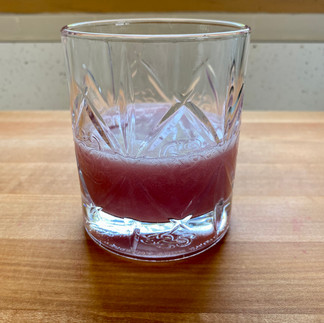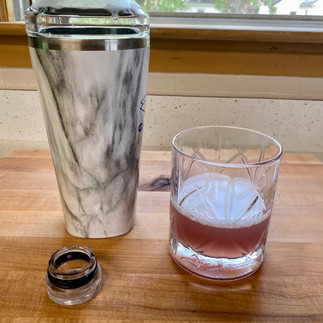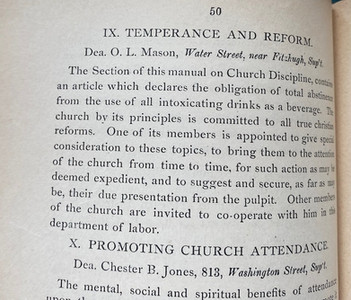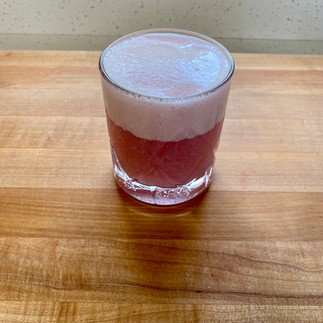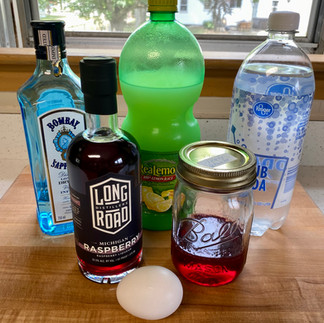
Not long after Clara Bell Walsh made a splash in the headlines for her boozy brunch, the US faced Prohibition when the 18th Amendment was ratified on January 16, 1919. Many parts of the nation already faced some prohibition on alcohol due to wartime production – grains were reserved for the troops and to feed Europe during the Great War. It was patriotic to abstain.
In that sense the 18th Amendment to the Constitution, which prohibited “manufacture, sale, or transportation of intoxicating liquors,” extended and made permanent the wartime restrictions. Of course, enthusiasm was not unanimous.

Congress then fought over what “intoxicating liquors” meant. Some wanted to only limit spirits and not beer. Others hoped for the wartime limit of 2.75% alcohol to become standard. Andrew Volstead (R-MN), the congressional leader of the “drys,” or those in favor of prohibition, argued that the 18th Amendment had been ratified, so now the government had an obligation to enforce it. The law called the Volstead Act set forth the parameters of the prohibition of the production and sale of alcohol, including setting the legal limit for production at 0.5%.
William Upshaw of Georgia keeping Congress dry. (Library of Congress)
The battles over alcohol began long before the 20th Century. Women led the Temperance Movement, in large part because they did not have control over their households or themselves. If their husbands drank away the wages, there was little recourse. Women often suffered at the hands of drunken abusers as well. The ideas behind the Temperance Movement were seen as an extension of women’s caretaking role in the domestic sphere applied to the public sphere. Some women were able to use that platform to get elected, including Jeanette Rankin and Edith Nourse Rogers.
Saginaw women also supported temperance, and here’s one local non-alcoholic elixir:
Mrs. William McBain’s Raspberry Vinegar
Place red raspberries in a stone jar, cover them with good cider vinegar, let stand for 4 days, then press out all the juice. To 1 pint of juice, add 1 pint of sugar. Boil 15 minutes and bottle while hot. Drop 1-2 raisins in each bottle. Serve with crushed ice and water or soda.
Three Quotes Providing Insight into the Life of Mrs. William McBain

The recipe for Mrs. William McBain’s Raspberry Vinegar first appears in the c. 1893 edition of the Saginaw Cookbook published by the First Congregational Church of Saginaw. (As only one William McBain is listed in the city directory for 1893/94, the contributor of this recipe is almost certainly Catharine McIntosh McBain.) Catharine McIntosh and William McBain married on December 18, 1849.
Her obituary provides an outline of her life:
“McBain – Word has just arrived by friends in Saginaw of Mrs. William McBain, who passed away at the home of her daughter, Mrs. Charles Charlson, New Westminster, British Columbia. Mrs. McBain was a well known former resident of this city, having left here about 16 years ago. She was 87 years of age and lived in Saginaw for many years, being one of the pioneers of this section. Her husband died in Saginaw and is buried in Forest Lawn cemetery. She leaves four daughters and one son, none of whom now reside here. The funeral took place in New Westminster, where the interment took place” (The Saginaw Courier Herald, August 8, 1911).
In 1894 – about the same time this recipe was originally published – her life changed suddenly and profoundly. She was visiting her daughter in Westminster, B.C., and she learned that her husband was ill. She started the journey to Saginaw; however, she was unable to make it back before he passed away. On September 15, 1894, the Saginaw Evening News reported:
“What makes the demise of the esteemed gentleman inexpressibly sad, is the fact that his wife was visiting her daughter, Mrs. Alex Charlson, across the continent at New Westminster, B.C., when he was taken ill and as Mrs. McBain is in poor health the telegram had to be couched in such language as not to alarm her and yet urge her to return. Consequently she is now on her long journey, only to find on her arrival at the saddened home next Monday morning, that her most beloved intimate is no more. The family dread the shock and fear their mother will be prostrated when she learns the sad news.”
Less than a month later, the paper reported that she and her daughter had left their home at 914 East Genesee and moved to Grand Rapids, Michigan.
While we have been unable to locate a portrait of Catharine McIntosh McBain and details of her life are vague, the church manual of the First Congregational Church, a congregation she joined on November 12, 1868, hints at the reasoning behind her submission of a recipe for a non-alcoholic beverage:
“SPECIAL RULE ON TEMPERANCE”
“3. While visible churches are set for the defense of the truth against iniquity in every form, it is proper for them to bear special testimony against sins peculiarly prevalent; therefore this church, recognizing intemperance as such sin, declares it to be the duty of its members to abstain from the use of all intoxicating liquors as a beverage, and to retrain from furnishing them to others for such purpose. It also holds that unintoxicating wine should be used in the celebration of the Lord's Supper.”
From: Manual of the First Congregational Church and Society of East Saginaw With Historical Sketch and Catalogue, East Saginaw, Daily Enterprise Steam Printing House, 1874
“Prohibition didn’t prohibit.”
Despite the efforts of women like Catherine McBain, who tried to save us, in the immortal words of Michigan Gov. William Comstock, “Prohibition didn’t prohibit" drinking.
In fact, that was a nice loophole. While you could not make, buy or sell alcohol, neither the amendment nor Volstead Act made drinking alcohol illegal. It was perfectly legal to drink spirits you already owned in your home. Sometimes clubs sold memberships and then furnished drinks to their patrons as a means to evade the law.

By the 1930s, partly due to the violence that accompanied Prohibition, Americans had grown tired of the Volstead Act. In 1932, Vogue celebrated women who drank as rebels along the lines of the suffragists. Kicking nostalgia for the glory days to the curb, Virginia Elliot and Phil Strong published their guide to entertaining in 1930. It’s a sarcastic, coy bartender's guide created for the post market crash, Prohibition world. Elliot and Strong wrote, “But now they realize that One Must Go On Living…In memory of the Bartender’s Guide and Many Memorable Parties, they have made a book for the 1930 American, and they offer it to him with a Brave Little Smile…Its formulae are based upon the ingredients now available: non-alcoholic (ignore the prefix at your own peril) Gin, Scotch, Rye, Corn and Applejack” (Shake 'Em Up, 15).
In addition to drinks and canapé recipes, Shake 'Em Up: A Practical Handbook of Polite Drinking, offers party-throwing wisdom: “Coasters are a snare and a delusion. Besides annoying your guests, they are seldom needed and they complicate life unreasonably,” and “If you dinner is going to be pretty good, all in all, serve only two rounds of cocktails and light canapes.” To introduce several strong cocktails, they write: “If you have invited strangers who, you just know, will like each other – and of course, they don’t – or if conversation languishes like a Dickens heroine, or if you don’t like the party yourself, try these combinations. Repeat doses until cured.” The suggested cocktails on the following pages included the Bing Cocktail, Grapefruit Juice Cocktail, and Dry Martini. The emphasis on gin during prohibition isn’t too surprising. So popularized we still hear sly references to “bathtub gin” today.
Catherine McBain would most definitely not approve, but her raspberry vinegar is similar to what is known as a “shrub” in the cocktail world. We’re pretty certain some daring women like Virginia Elliot mixed a little raspberry vinegar (shrub) with gin for a refreshing summer drink.
Raspberry Gin Fizz
1 ½ oz. gin
½ oz. raspberry liqueur
½ oz. lemon juice
1 oz. raspberry shrub
½ oz. egg white
3-4 oz. club soda
Combine all but the soda and shake. Pour into a short glass and top with club soda.
Half-Hearted Hostessing
Pair your Raspberry Gin Fizz with these prohibition/Great Depression Era Canapés from Shake 'Em Up.
Peanut Butter Canapés
Spread round of toast (graham or white bread) with peanut butter. On top place a small piece of very crisp bacon.
Pimento Cheese Canapés
Spread whole wheat wafers with pimiento cheese that has been mixed with a little sweet cream. Garnish with cucumber rings and serve.
Oh, and lest we forget to mention, it was a woman, Mary Norton, who introduced the first bill to repeal the 18th Amendment. Like we said, it's complicated.
Sources:
"Legislating the Liquor Law -- Prohibition and the House," Whereas: Stories from the People's House. August 13, 2019.
Virginia Elliot and Phil Strong, Shake 'Em Up: A Practical Handbook of Polite Drinking (New York: Tin House Books, 1930).
Manual of the First Congregational Church and Society of East Saginaw With Historical Sketch and Catalogue, East Saginaw, Daily Enterprise Steam Printing House, 1874.
The Saginaw Courier Herald, August 8, 1911.
Saginaw Evening News, September 15, 1894.




